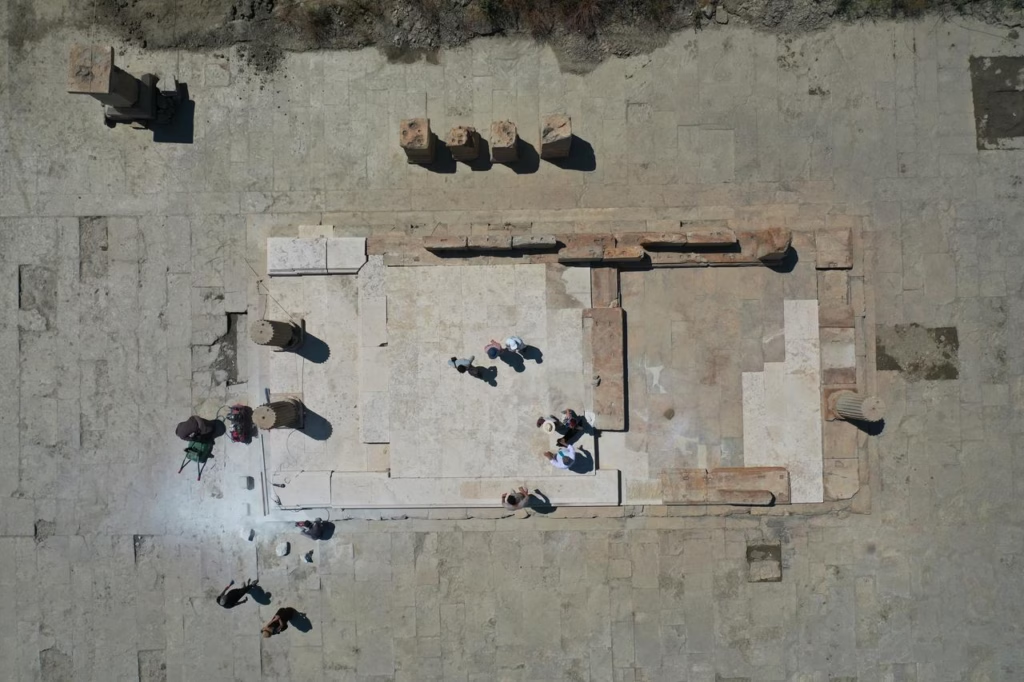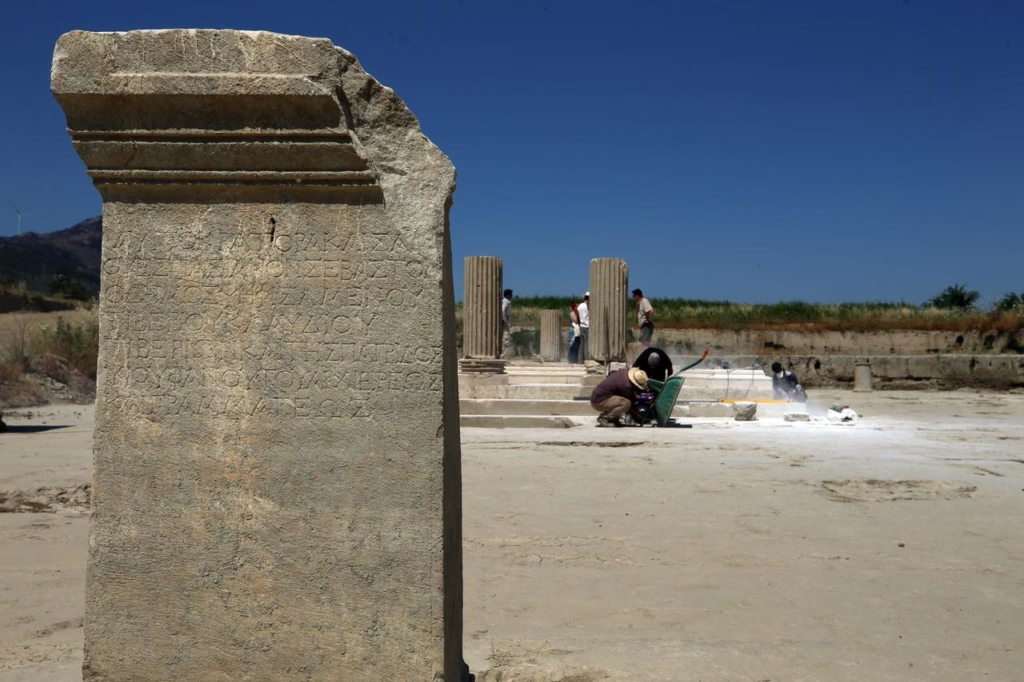Archaeologists have uncovered a stunning marble-paved square in the ancient city of Magnesia, located in Germencik, Aydın province of western Türkiye. The discovery, dating back 2,400 years, is believed to be the city’s main agora—a monumental space that served as the heart of civic life.
Excavations have been ongoing since 2021 under the direction of Associate Professor Görkem Kökdemir from Ankara University’s Department of Archaeology. The work is part of Türkiye’s national “Heritage for the Future” initiative, overseen by the Ministry of Culture and Tourism.
Buried Under 4 Meters of Sediment for Centuries
Due to centuries of earthquakes and flooding caused by the nearby Büyük Menderes (Maeander) River, the agora had been buried under nearly four meters of alluvial sediment. Despite this, archaeologists have managed to uncover the ancient marble flooring and architectural features in remarkably well-preserved condition.

So far, approximately 10,000 square meters of the 25,000-square-meter agora have been revealed. According to Dr. Kökdemir, “The entire marble pavement in this section has survived intact. This is an extraordinary archaeological find. We are now nearing the halfway point and plan to expand toward the southern stoa.”
Not Just a Marketplace, But the Soul of the City
Contrary to common belief, the agora was not simply a market. It was a civic and cultural center—a space that stored the memory of the city. Lined with columned galleries and enclosed chambers, the agora may have functioned as a public archive or administrative hub.
Past excavations by German teams uncovered nearly 200 inscriptions from just two of the enclosed rooms. Experts believe the complete site could yield many more historical documents that illuminate the political and social life of ancient Magnesia.

Dr. Kökdemir emphasizes, “This was not a commercial plaza. It was the brain and soul of the city—where knowledge and memory were preserved and passed forward.”
Plans for Future Visitor Access
With ongoing restoration and excavation, the team hopes to create a guided visitor route through the agora, allowing the public to walk along the same marble streets that citizens of ancient Magnesia once did.
This monumental discovery not only deepens our understanding of urban life in ancient Anatolia but also promises to become a significant heritage tourism destination in western Türkiye.
Cover Image: The largest square (agora) of the ancient city of Magnesia, located in Aydın, Türkiye and dating back 2,400 years, is being uncovered with its marble pavement remarkably intact. June 25, 2025. (Photo: Anadolu Agency)




